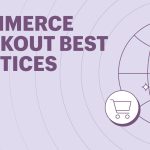A tech stack is the set of technology tools used to run your business. For instance, if you run a bakery that accepts credit card payments, your payment processor is part of your tech stack.
Individual business units like HR and accounting teams can also have their own tech stacks. Marketing teams use a specialized stack called a martech (marketing technology) stack, and the decisions you make for this stack can be as significant as selecting a hosting service for your website or payment method for your business.
In this article, we’ll show you what a martech stack is, and how to build one.
What is a martech stack?
A martech stack—or marketing tech stack—is the combination of tools and platforms you use to support your marketing efforts. The term “stack” refers to the layers of technology working together to achieve marketing goals or objectives. These technologies include platforms that help you manage and optimize your marketing campaigns and strategies, uncover user behavior on your site, and send and track email campaigns. They vary depending on the size and type of business and its specific marketing objectives.
Marketing tools like Google Analytics, Klaviyo, Ahrefs, and Zapier are commonly included in martech stacks.
Components of a martech stack
Foundational martech components
Function-specific martech components
Advanced martech components
A martech stack can be divided into separate levels. The lower part of the stack consists of foundational technologies that support the entire marketing technology infrastructure, whereas the upper part consists of more specialized and targeted tools that perform specific marketing functions. In other words, the lower levels (your stack’s foundation) will impact which tools you select for the upper layers. Therefore, it’s best to consider your stack in three parts: foundational, function-specific, and advanced components. Here’s how they differ:
1. Foundational martech components
Foundational martech components include the services you use to build and manage your website. They are often the first software you decide on in your marketing tech mix because, through compatibility or integration, they influence what advanced or complementary tools can be added on top of them. For example, content management systems (CMSs) like Shopify and WordPress have a marketplace of integrated plug-ins or apps designed for that CMS. If you need the functionality of a specific plug-in, you’ll need to choose the related CMS.
The two primary foundational martech components are:
Content management system (CMS). A CMS is a user-friendly software application that enables you to create, manage, and publish digital content on your site. Shopify offers CMS functionality; other popular CMSs include WordPress and Webflow. Some businesses choose not to have a CMS and rely on custom code or a headless CMS—a combination of custom code and editable elements—to build their site, which requires much more technological knowledge.
Customer relationship management (CRM). A CRM system is a platform that stores important information about your customers and prospects so you can manage your interactions with them. A key component of a CRM is the ability to track and define stages for leads as they move through your sales funnel. This information can inform segmented email marketing campaigns and help you understand the quality of your leads.
When choosing foundational martech components, marketing often isn’t the only consideration, since these components can impact other business units. For example, your operations team may have specific CMS requirements, such as the ability to edit prices without touching the code.
2. Function-specific martech components
Unlike foundational martech components that impact many areas of your business, function-specific components are designed specifically for marketing tasks. When considering these parts of your martech stack, identify their ability to integrate with the other tools across your stack. Here are examples of function-specific martech components:
Web analytics. Web analytics tools help you track how visitors interact with your website, including how they got there. They can show you more granular information on your sources of traffic, engagement rates for your pages, and your website’s overall conversion rate. As such, these tools are essential for understanding your website’s and marketing campaigns’ performance.
Email service provider (ESP). ESPs provide email marketing services, including sending and tracking email campaigns, managing subscriber lists, and providing analytics and reporting on the performance of campaigns. Shopify provides ESP functionality through Shopify Email, which also integrates with other common ESPs such as Klaviyo and MailChimp.
Social media tools. Social media tools include analytics built into social media platforms like Instagram, YouTube, or TikTok, as well as the social media management tools you use to help you optimize your social media presence, edit and schedule posts (such as Later), or monitor and aggregate data (like SocialBlade). They show you how people are interacting with your content on social media platforms. Shopify comes with powerful tools that help you promote and sell products on Facebook, Instagram, TikTok, Google, and YouTube from one unified back office.
Search engine optimization (SEO) tools. While SEO tasks like updating pages and writing blog posts can be done on a CMS, SEO tools (like Ahrefs and Moz) can help improve search engine visibility and organic traffic. These tools provide a range of insights, like which keywords are related to your business, which backlinks are relevant, how you can optimize your pages, and how they are performing.
Advertising technology. Advertising technology, or ad tech, refers to the tools and platforms (like Google, Meta, and TikTok) used to plan, execute, and manage your digital ad campaigns. It also includes performance-improving ad technologies like click fraud (invalid clicks for profit), such as ClickCease, and creative analysis (insightful interpretation of ad performance data), such as MagicBrief).
3. Advanced martech components
Advanced martech components help unify activities across channels and level up existing channels in nuanced and technical ways. Unlike function-specific components, their purpose isn’t to unlock new marketing channels.
Most of these tools, which can be technical and costly, are typically used when your business is large enough for a marketing team to manage them. A few examples of these components include:
Marketing attribution tools. These software platforms, such as Triple Whale and Northbeam, are specifically designed to analyze and measure the impact of multiple marketing channels and touchpoints on a conversion event (whereas Google Analytics provides general website and user behavior data). Marketing attribution tools typically focus on advertising channels since those channels cost the most.
SMS and marketing automation. Advanced ESPs do more than just send emails; they enable automated, context-specific messages through email and other channels, like SMS. One example is a post-purchase flow: with a tool like Klaviyo, you can send a promotion through email or SMS to customers who bought a specific product two weeks after.
Customer data platform (CDP). When a martech stack gets robust, it can contain many different data sources. For example, Meta, Google Analytics, Klaviyo, and Ahrefs could track visitors to your site separately, and they might do so slightly differently, which can cause discrepancies and affect your ability to gauge marketing performance. CDPs, also known as data management platforms, aggregate and unify data from disparate sources, then transmit it back to the rest of the stack. CDPs can provide a unified view of the customer, which you can use to personalize marketing and experiences.
BI/marketing intelligence. Like CDP, marketing intelligence tools aggregate marketing data from multiple sources. But instead of tracking or transforming this data, they provide visualizations of it. For example, many marketers use Looker Studio’s free dashboards to align their Google Analytics data with their Meta ad spend, allowing them to visualize and analyze data in a user-friendly way, gain insights, and make data-driven decisions.
Tag management system (TMS). Many components of a martech stack ask marketers to install third-party tags on their website, which are small snippets of code that track user activity and enable analytics, advertising, and personalization. (For example, Meta asks that you install a Facebook pixel, and Google a GA4 snippet.) TMSs like Google Tag Manager help manage and deploy tags on your site from a single interface, using one snippet of code rather than several different sets. This allows marketers to stay organized and can help your website load faster.
Tips for building your martech stack
The right martech stack for your business depends on your business model, marketing strategy, and budget. Consider the following when building your martech stack:
Marketing budget. Almost every part of the martech stack listed above comes at a cost. Pricing for a single component can range from a few dollars a month to a few thousand. When planning your martech stack, consider it in terms of milestones or stages and set your budget accordingly. Start by investing in foundational components and work your way to more advanced components.
Integrations. When considering your tools, interoperability—the number of available integrations—is essential. Integrations, like Klaviyo’s integration with Shopify or Looker’s integration with Google Ads, help your martech stack run smoothly. For example, Shopify integrates with GA4’s web analytics to automatically send customer ecommerce activity data (such as purchases, product views, and cart additions), allowing you to analyze this data on the Google Analytics platform. If you didn’t have this integration, you’d have to hire a web developer to create code that sends this information to GA4. Most martech tools list their available integrations on their website.
If you want to build or buy it. With every piece of the stack, you can ask yourself whether it makes more sense to build it yourself or buy it. For small business owners, it usually makes more sense to buy; it’s unlikely that your business would benefit from developing custom web analytics software, for example. But sometimes, there are simple, cheaper options than buying a martech tool if you don’t have a great need for many functions. For example, many companies use a spreadsheet to plan social media posts instead of buying a scheduling tool.
Martech stacks FAQ
What is an example of a martech stack?
Tools like BuiltWith.com can help you see the martech stack of companies you admire. Here’s an example of a typical martech stack for an ecommerce business:
CMS: Shopify
ESP: Klaviyo
Social media tool: Later.com
Web analytics: Google Analytics 4
SEO: Ahrefs.com
SMS: Emotive.io
What are key components of a martech stack?
There are three key components in a martech stack: foundational, functional, and advanced. Within these categories, there are many individual marketing technologies, such as customer relationship management (CRM) and tag management systems (TMS).
How can businesses measure the performance of their martech stack?
The goal of a martech stack is to enable efficient, effective marketing. The best way to measure martech performance is to calculate your marketing efficiency ratio (MER): your total sales divided by your total marketing costs. A higher MER indicates more efficient marketing operations.






0 Comments